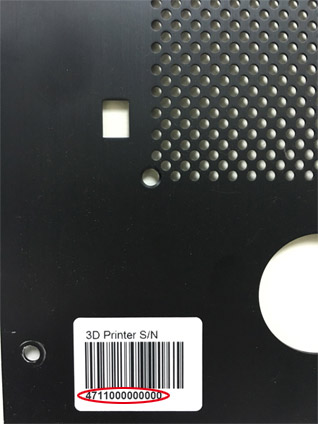Kudo3D FAQs
1. Direct Bank Transfer: you can choose an offline payment option via Direct Bank Transfer during the online checkout process.
Orders with “Direct Bank Transfer” will show an “On-Hold” status. Please submit your payment directly to our bank account within 24 hours.
2. Online Payment:
Through Paypal, you can pay by credit card on the checkout page directly.
We strongly recommend you register or log in Kudo3D website before proceeding with the checkout process. By doing this, your order will be shown in your Kudo3D account. If not, you can only receive the email notification with your order details which is difficult to monitor your order status.
Please note that your order will reflect an “On-Hold” status until we update it.
Please contact us and provide your Order Number after you transferred the payment. We will update your order status after we confirmed your payment.
For countries which are not listed on the “Country” drop-down selection menu during the checkout process, please contact us for a customized shipping quote.
Titan 1 & Titan 2 use a DLP projector to project images onto the resin in a two dimensional fashion. Therefore, time required to expose the resin is shorter. There are fewer moving parts in the printer. The DLP projector is a matured consumer product so it is much more reliable and easier to maintain than a customized scanning laser system that requires sophisticated alignment and calibrations. The DLP projector can be easily moved to adjust the native pixel size from 37-100 micron, while Form 1 has a fixed laser spot size of 300 microns which is not enough for fine jewelry printing.
In addition, Titan 1 & Titan 2 are equipped with a proprietary patented layer release (passive self-peeling) technology based on a flexible VAT. This technology minimizes the release force and enables large area printing that the Form 1 cannot achieve.
In short, Titan 1 & Titan 2 can print everything that Form 1 can print, but Form 1 is not able to print objects that are beyond Titan 1 / Titan 2’s print size and print resolution.
More clearance area will extend the life of the projector and the other printer components.

If more resin is needed, please add it from the side of the resin container after roughly half of the original resin is used.
Soft silicone resin container (vat):
The adhesion between the silicone and Teflon film is much stronger than the hard silicone resin container.
Pros: The separation force is much lower for small prints. The surface quality is better for small prints.
Cons: The Teflon film tends to have more warpage.
This vat is not suitable for prints demanding flat surfaces. This vat is recommended for beginners or those who print small jewelry and miniatures.
Hard silicone resin container (vat):
The adhesion between the silicone and Teflon film is weaker than the soft silicone resin container.
Pros: The Teflon film tends to have less warpage.
Cons: The chance that the Teflon film to be directly lifted off is higher. The separation force is higher so users must print at a lower lifting speed.
This vat is recommended for prints demanding flat surfaces.
In general, the lifetime of the film depends on the separation force.
The easiest way to reduce the separation force is to use slowing lifting speed.
The build volume is 192mm x 108mm x 240mm at 100 micron resolution.
You can find the IP address of your printer in your router service page or by downloading “Advanced IP scanner”.